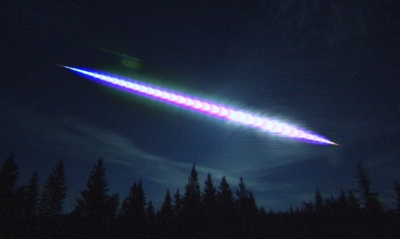
A bolide is an extremely bright meteor, especially one that explodes in the atmosphere. In astronomy, it refers to a fireball about as bright as the full moon, and it is generally considered a synonym for a fireball. In geology, a bolide is a very large impactor.
Many explosions recorded in Earth’s atmosphere are likely to be caused by the air bursts that result from meteors exploding as they hit the thicker part of the atmosphere. These types of meteors are also known as fireballs or bolides with the brightest known as superbolides. Before entering Earth’s atmosphere, these larger meteors were originally asteroids and comets of a few to several tens of metres in diameter, contrasting with the much smaller and much more common “shooting stars”.
The most powerful recorded air burst is the 1908 Tunguska event. Extremely bright fireballs traveling across the sky are often witnessed from a distance, such as the 1947 Sikhote-Alin meteor and the 2013 Chelyabinsk meteor, both in Russia. If the bolide is large enough, fragments may survive such as the Chelyabinsk meteorite. Modern developments in infrasound detection by the Comprehensive Nuclear-Test-Ban Treaty Organization and infrared Defense Support Program satellite technology have increased the likelihood of detecting airbursts.
Picture Credit : Google

